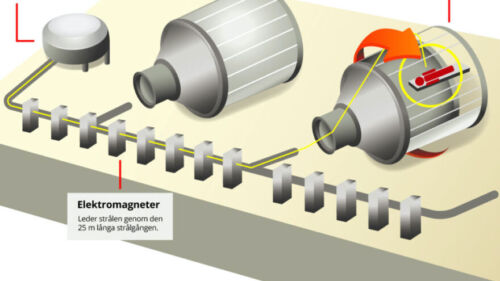The difference between proton and photon therapy
Proton therapy and traditional photon therapy have similar effects on the tumor. The main difference is that proton therapy can be controlled more precisely than photon therapy. The energy of a proton beam can be adjusted so that the maximum dose is delivered at a specific, predetermined depth (the Bragg peak).
Because of this, proton therapy can be concentrated on the tumor, resulting in a lower dose to healthy tissues near the tumor. This can reduce the risk of radiation-related side effects. Proton therapy can be especially beneficial for treating tumors located close to sensitive organs such as the heart, brain, or lungs.
For some tumors—and for some patients—proton therapy is an excellent treatment option.
One group of patients who often receive proton therapy is children and adolescents, as the goal is to provide them with the most personalized and least harmful treatment possible. Proton therapy is especially important for young patients because it minimizes radiation to growing tissues and vital organs, reducing the risk of long-term side effects and secondary cancers. This precision makes proton therapy a preferred choice in pediatric oncology worldwide.

Proton radiation past and present
The method of treating tumors with proton therapy is not new. The first proton therapy treatments were performed in 1954 at the University of Berkeley in the United States. Sweden was not far behind: in 1957, the country’s first proton therapy was performed at the Gustaf Werner Institute (later known as The Svedberg Laboratory) in Uppsala.
Initially, proton therapy was given on a small scale, primarily to patients with brain tumors.
When Skandionkliniken opened in 2015, proton therapy started to be offered on a national scale in Sweden.
Protons are positively charged hydrogen ions accelerated to high energies in a device called a cyclotron. Within the cyclotron, protons reach up to 60% of the speed of light. During treatment, the protons are guided to the treatment room and precisely targeted at the tumor. The therapy works by damaging the DNA (genetic material) of tumor cells so that the cells can no longer divide.

Radiation treatment – an old method
Radiation has been used to treat tumors since the early 20th century. More than a hundred years ago, radium—a radioactive element—was used to treat cancer. This method often resulted in significant unwanted harm, affecting both patients and healthcare staff due to insufficient safety measures and imprecise dosing.
Today, treatment methods are completely different. The most common type of radiation used in cancer therapy is photon therapy, which is the standard method at most radiation treatment clinics.
About half of all cancer patients receive some form of radiation therapy, and it is estimated that radiation treatment contributes to the cure of around 30% of all cancer cases.